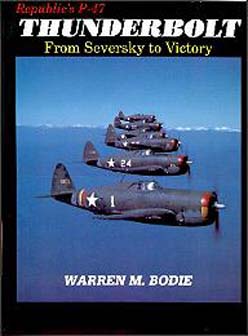
Register a SNAP EBT card with Amazon
The Republic P-47M The Fastest Piston Engine Fighter Of The War


The P-47M was, essentially, developed collaterally with the XP-47J. The
"J" was fitted with a high output version of the P&W R-2800. Specifically,
the R-2800-57. This engine made 2,800 hp @ 2,800 rpm at 35,000 feet.
This is in War Emergency Power. The aircraft actually attained 507 mph at
an altitude of 34,300 feet. 2,800 hp is 133% of rated power. At military power
(100%), the XP-47J could sustain 470 mph. 435 mph was attained at 81% of
its rated power (1,700 hp). All performance figures were obtained at 34,300
feet. The "J" model was an especially good climbing fighter too. It had a
climb rate at sea level of 4,900 fpm. At 20,000 feet, it was still rocketing
up at 4,400 fpm, and got there in 4 minutes, 15 seconds. Time to 30,000
feet was only 6 minutes, 45 seconds. Now that's an interceptor! Yet it had
a usable range of 1,075 miles. Rather impressive, don't you think? No, this
was not a stripped down hotrod. It was fully armed and carried ballast in the
wings equal to 267 rds per gun. The aircraft was flown to a height of 46,500
feet and was capable of a bit more.
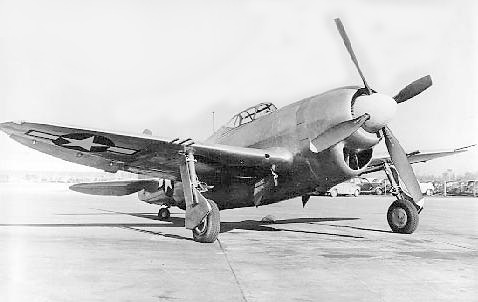
Originally designed to defeat the FW-190 series fighters, the XP-47J
certainly would have exceeded this requirement. In point of fact, with it's
critical Mach of .83, it had the potential to chase down Me-262's by utilizing
a shallow dive, taking advantage of it’s superior service ceiling.
Despite this incredible performance, the XP-47J was really nothing more than
a technology demonstrator. Meanwhile, the R-2800 C series was installed in
another, more ordinary Thunderbolt P-47C. The purpose was to trade a little
performance for simplicity of manufacture. The idea being that a minimum
of changes were required to the current aircraft for the C series engine.
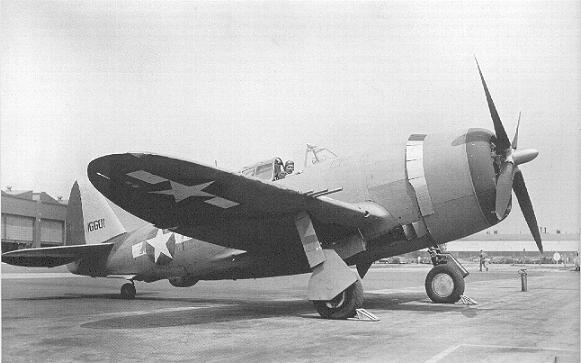
The aircraft that resulted was designated the XP-47M. Not "officially sanctioned",
the XP-47M was an "in-house" development program. The "M" was painted in
chromate yellow to distinguish it from the run of the mill C and D models.
Likely, this overly bright paint scheme was selected to indicate its test status
in order to prevent over-zealous P-47 and F6F pilots from making mock attacks,
as was the standard rule of the day over wartime Long Island.
Right out of the starting gate, the XP-47M was the horse to beat in terms of speed. The XP-47M proved to be nearly as fast as the XP-47J. 488 mph was obtained on at least one flight. The official maximum speed is 470 mph. However, over-boosting the engine could tweek another 15 to 20 mph out of the big fighter. There is adequate evidence to indicate that some of the more resourceful crew chiefs in the 56th Fighter Group, managed to hotrod the P-47M to the point that some reliable pilots were reporting 500 mph at altitude in level flight. Some may find this next tidbit hard to swallow, however, the test documents still exist.
During durability testing of the C series R-2800 by Republic, it was decided to find out at what manifold pressure and carburetor temperature detonation could be induced. They ran the engine at extreme boost pressures that produced 3,600 hp! But wait, it gets even more amazing. They ran it at 3,600 hp for 250 hours, without any failure! This, with common 100/130 avgas. No special fuels were used. Granted, the engines were completely worn out, but survived without a single component failure. Try that with Rolls Royce Merlin or Allison V-1710.
As the summer of 1944 arrived, so did the first of Germany’s vengeance weapons. The sudden appearance of the V-1 flying bomb caused a serious uproar in Britain. Flying at speeds right around 400 mph., the V-1 was not easy to intercept prior to flying over populated areas where knocking it down could have a worse effect than leaving it alone. Many of the RAF’s latest fighters were thrown into intercepting the "Buzz Bombs", preferably over the English Channel. Tempests, Spitfires and even the jet powered (but not very fast) Meteors were put to work intercepting the deadly missiles.
Naturally the British government called upon its allies to aid in this duty. Upon being informed of the XP-47M, three YP-47M development aircraft were ordered. These were built using P-47D-27-RE fighters straight off the production line.
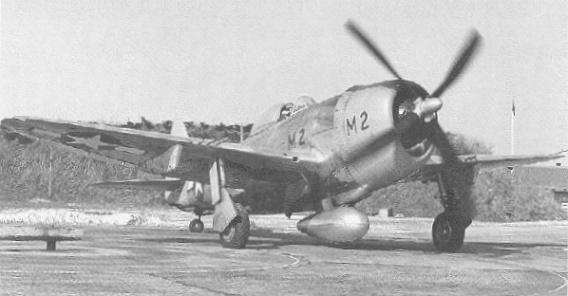
Having already logged hundreds of flights with the XP-47M, beginning in mid
1943, Republic had a big leg up in terms of development time. This was to be
very valuable. The accelerated production of the long ranging P-51D threatened
to kill further P-47 production. The AAF was beginning to indicate that since
the Mustang could provide for most of their fighter needs, especially in role of
escort, the P-47, with it’s limited range had but a short future.
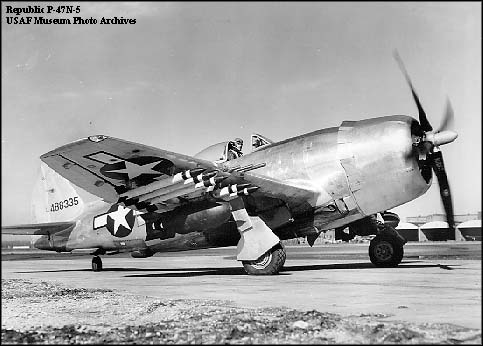
Republic went to work to produce a long range variant of the Thunderbolt. The
basis for this new model was the XP-47M. New wings were designed and installed
on the fighter, which contained, for the first time, fuel tanks. This new "wet wing",
with its "clipped" wing tips, was also fitted to a YP-47M, which was re-designated
as the XP-47N. The resulting P-47N was capable of maximum ranges in excess
of 2,300 miles and speeds up to 465 mph. However, it was deployed only in the Pacific.
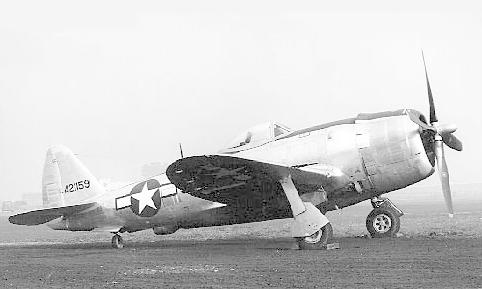
The production P-47M fighters did not reach operational status until after most of
the V-1 launch sites were over-run by Allied ground forces. Deployed to 3 squadrons
of the 56th Fighter Group, the new fighter likely did not chase any flying bombs.
Inasmuch as most aviation historians claim that the P-47M was designed specifically
to intercept the V-1, it will come as a surprise to them to learn that the prototype
existed more than a year before the first V-1 was launched at Britain. Moreover, the
P-47D, deployed in large numbers, was certainly fast enough to overtake the V-1. It
was only coincidence that the XP-47M and the R-2800 C series engines were available
when the V-1’s began falling on London.
P-47M performance was as follows:
Max speed: 470-480 mph @ 28,500 ft. Climb, at max. gross weight (including three 75 gallon drop tanks): 4.9 minutes to 15,000 feet at 2,600 rpm (1700 hp). Reportedly, the "M" could reach 20,000 feet in 5.7 minutes at military power (2,100 hp @ 2,800 rpm). 20,000 feet in 4.75 minutes in WEP (2,800 hp @ 2,800 rpm). This is with full internal fuel and ammo. No external stores or drop tanks. In other words, normal load, clean configuration.
Should the reader desire to read further on the Republic P-47
Thunderbolt, there exists no better book than Warren Bodie's
definative study pictured below.
